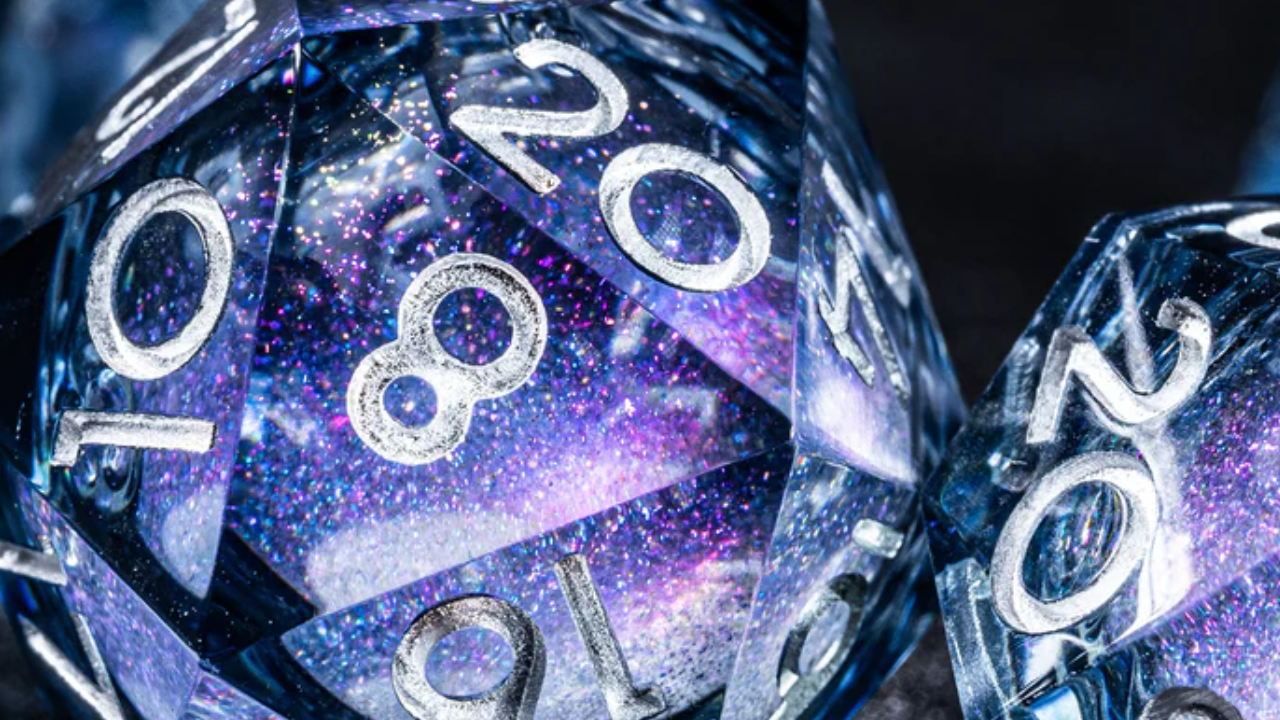Tabletop gamers, collectors, and hobbyists all adore resin dice sets because they are beautiful and incredibly adaptable. Epoxy resin, a flexible and long-lasting material that can be molded into a variety of shapes and sizes, is used to create these dice sets. Gamers who value both practicality and aesthetics highly prize resin dice sets because of their great variety of colors, styles, and designs.
Customizability is one of the best features of resin dice sets. Crafters and artists can create distinctive designs by adding various colors, glitters, inclusions, and even tiny objects within the resin, allowing for a great degree of customization. Gamers who want their resin dice sets to express their unique personalities and styles are drawn to this customization feature.
Types of Resin Dice
When casting dice, you’ll see that there are different mold options that you can choose from. By using these molds, you can make polyhedral dice, in the well-known roleplaying game Dungeons and Dragons, all different varieties of dice are part of a set.
D4: Tetrahedron Dice
The four sides of these dice are a pyramidal shape. On the faces, the numbers 1 through 4 are dispersed, with three numbers on every surface or face. The numbers are placed in a specific order at each point of the triangle face, and each face will have the same number at the same point or apex of the pyramid. You should use the outcome of the die roll if only one number—the top-most corner number—remains upright on all faces. The dice are thrown into the air rather than rolled because it is not the simplest type to do so.
D6: Cube Dice
We are most familiar with this six-sided die because it is the one that most board games utilize. This dice, which has the digits 1 to 6, is shaped like a cube and has a distinct number on each face. There is always a seven when the numbers are on opposite faces. Character qualities in Dungeons and Dragons are determined by these dice.
D8: Octahedron Dice
The faces of this eight-sided die are all triangular. A pair of pyramids connected at the base may be seen throughout the entire die. Each face will have a number between 1 and 8, and the opposite sides will sum to nine. To determine how much damage powerful weapons deal, this form of dice is frequently used in Dungeons & Dragons games.
D10: Trapezohedron Pentagonal Dice
In general, this type of die and the D00, or percentile die, go hand in hand. Where the piece’s 10 sides come together to form the kite shape is where the die’s two end corners, which correspond to the kite’s top and bottom corners, are situated. This specific kind of die has a number between 0 and 9 because its identical faces add up to nine. Together utilizing roll both dice to determine a “percentage”.
D00: Dice of Percentile
The second of two 10- Dice with matching sides is represented with this die. The percentile dice are so-called because the outcome of this die will be a percentage of 100. Each face of this die’s ten sides, which range from 00 to 90 in increasing tens, has a different value.
Because both 10-sided dice are colored differently, you can tell this one apart from the other. You would roll both dice simultaneously and then add the two results to get a percentage. The value is 100, nevertheless, if you roll a double zero.
D12: Dodecahedron Dice
Each face of this die, which has 12 sides, is shaped like a pentagon. The result of adding the values of the opposite faces is 13. This dice is typically used in Dungeons and Dragons to calculate how much damage big weapons do.
D20: Icosahedron Dice
The most popular and widely used kind of dice in Dungeons and Dragons have an incredible 20 faces and are taller than their less-sided brethren. On each of the 20 faces, there are either 1 to 20 or 0 to 9 integers that combine to make an equilateral triangle. Two opposing sides added together should equal 21.
Remarks
As manufacturers and artisans experiment with new designs and production methods, the selection of resin dice on the market is enormous and keeps growing. The all-encompassing customizability of resin dice allows for a wide variety of alternatives for players and collectors, which is one of their greatest appeals. Individual interests and preferences can be catered to with each set of resin dice, making each one a special work of art.
